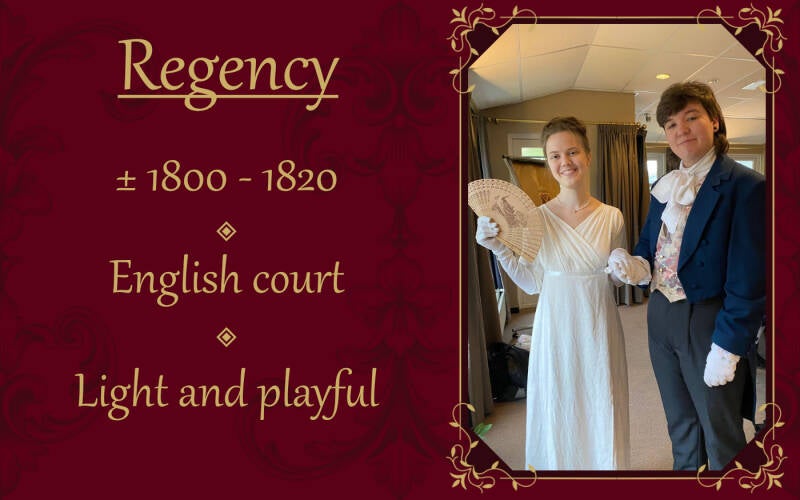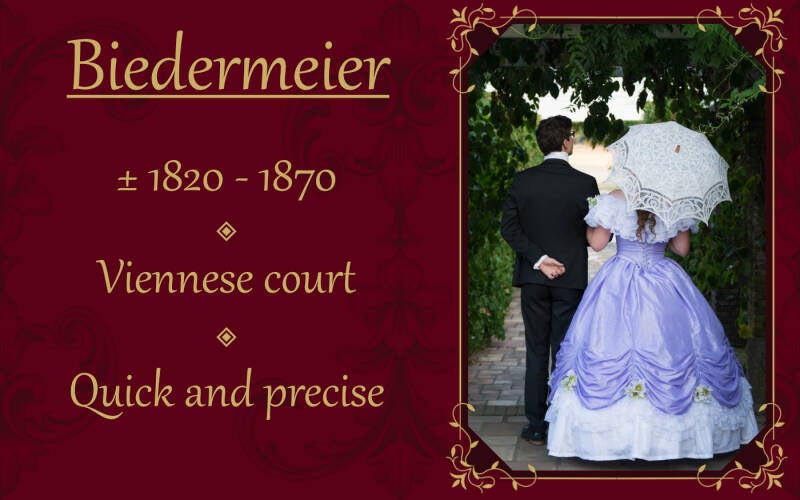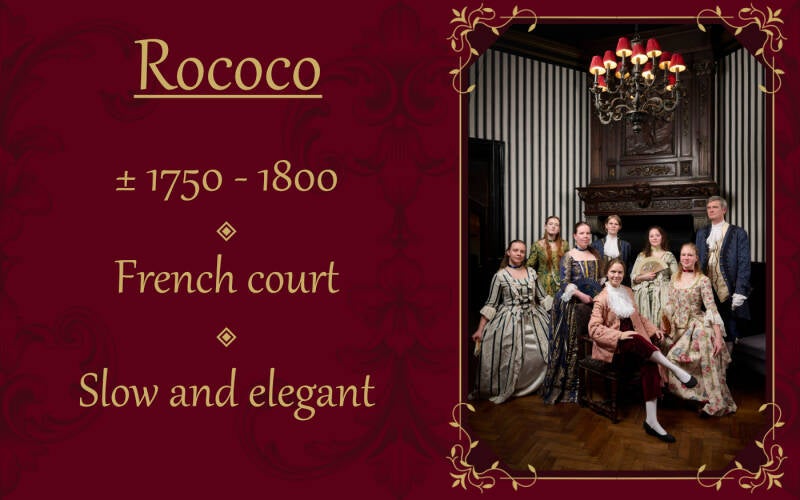Our styles of dance
In dance, the French rococo period roughly spans the reign of the final two French kings; let’s say 1750-1800 for easy numbers. It is characterised in fashion by the wide profiles of the French sack-dresses for women and the long, elaborately embroidered coats for men. And yes – the powdered faces and hair (or wigs). However, at present, we tend to leave our powders at home because let’s face it: no-one looks good in ghostly white…
The dances themselves are full of languid, elegant motions that transition gracefully into the next. Mostly, they are meant to show off all your bling, lace and expensive clothing, because if you got them monies, ya gotta show them off!
These slower dances also offer the perfect opportunity to flirt with your fellow dancer(s), which always makes for an entertaining show.

For dancing purposes, we classify the English regency period as approximately 1800 – 1820. If you have ever seen Pride and Prejudice or Bridgerton, you should have a decent impression of what fashion and dances looked like back in those days. Women were wearing slim column-style dresses and men put on suit jackets with (many) colourful vests underneath.
The dances from this time period are fairly simple and very easy to learn. Repetition is almost always found in every dance and the whole vibe is light and playful. As an added bonus, you’ll find you have time for a little chat with your beautiful/dashing dance partner every now and then ;)

While the English and the French are still busy dancing stiffly and with as little physical contact as possible, a new movement is starting over in Austria: the Viennese citizens are warming up to Johann Strauss I and his quick polaks, galops and waltzes. The composer’s son, Johann Strauss II, will ultimately gain greater fame with (among many others) a piece still known by all today: On the Beautiful Blue Danube. We’ll peg this era of dance roughly between 1820-1870.
In the ballroom, ladies’ dresses are getting fuller and rounder and must now be supported by hoop skirts. Their clothes and hair are beautifully decorated with delicate lace trims and fresh flowers. The men have once and for all discovered the three-piece suit, and they will wear white tie from now on – this is still the staple in high-society to this very day.
The dances are more varied and vibrant than they have ever been before, and closer contact between dance partners is now allowed. This greatly upset the elderly generation, but you can easily see why the youths loved it~


